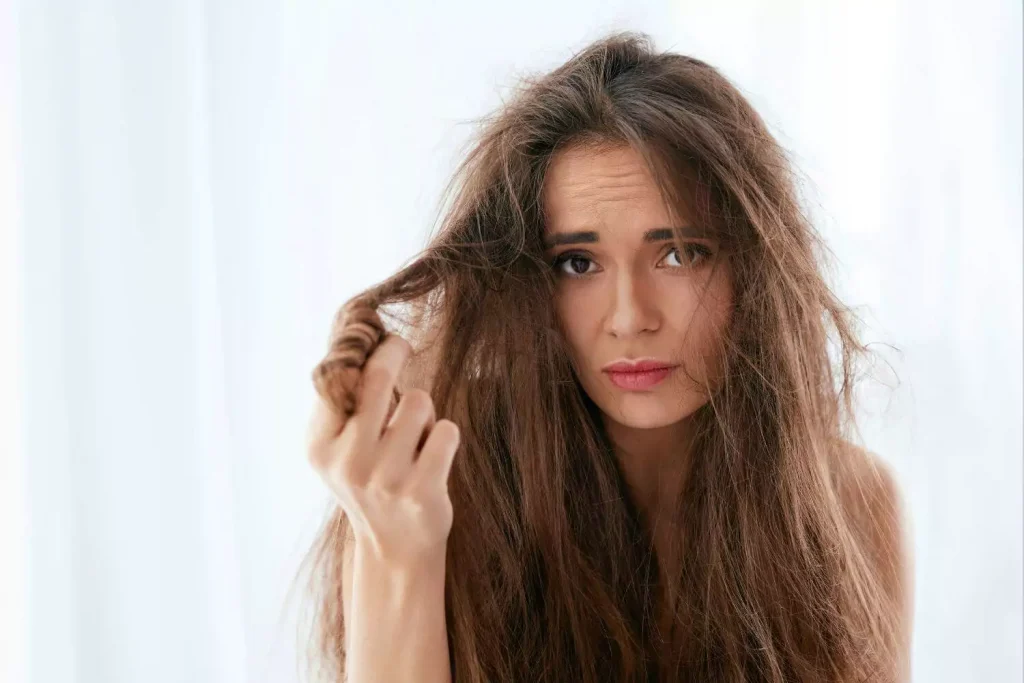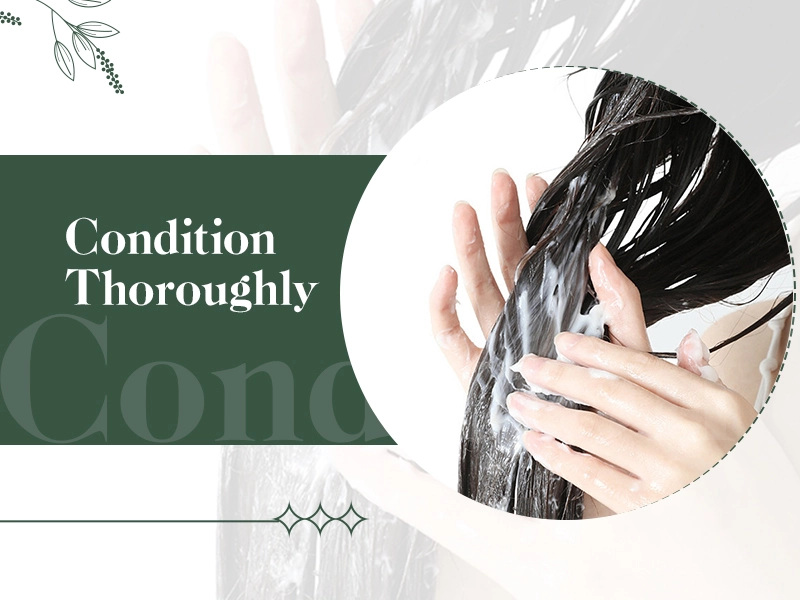To prevent frizzy hair extensions, we must first understand the root cause. Although many people attribute it to the product, the four main reasons are Hair Quality, Environmental Factors, Care Routine, and Storage Conditions. This article will analyze these four aspects and guide how to fix frizzy hair based on the four main reasons.

Why Does Your Hair Turn Frizzy?
1. Hair Quality
Due to the lack of sebum (natural oils) from the scalp, human hair extensions tend to become dry and frizzy. Sebum contains essential nutrients that keep hair soft and smooth. Since extensions are not connected to the scalp, they lose this natural oil supply, leading to gradual dryness.
Additionally, after processes like bleaching, dyeing, or extensive chemical treatment, the hair cuticles become damaged, reducing their ability to retain moisture.Although we have upgraded our products to reduce the occurrence of frizzy situations, it is not possible to completely avoid it.

2. Environmental Factors
Low-humidity environments accelerate moisture evaporation from hair, while static electricity further contributes to dryness.
Prolonged exposure to UV rays breaks down the protein structure of the hair, making it brittle, faded, and dry.
3. Care Routine
Hard water (containing calcium and magnesium ions) causes mineral buildup on the hair surface, blocking the absorption of conditioning products and leading to dryness. Similarly, seawater or pool water (containing chlorine) accelerates dehydration.
The use of sulfate-based shampoos over-cleanses the hair, stripping its natural protective layer.
Frequent washing, especially with high water temperatures, exacerbates moisture loss.
Excessive use of heat-styling tools without deep conditioning further damages the hair.
4. Storage Conditions
Long-term storage in excessively humid or dry environments can also compromise hair quality.
Stop Frizzy Hair with These Tips
1. Hair Quality Factors
Use moisturizing haircare products: Choose shampoos, conditioners, and hair masks containing natural oils (e.g., coconut oil, argan oil, shea butter) to replenish lost nutrients.
Regular deep conditioning: Apply a reparative hair mask or protein treatment 1-2 times per week to restore damaged cuticles and improve moisture retention.
Replenish keratin: Incorporate keratin-infused haircare products to strengthen hair structure, reducing breakage and dryness.

2. Environmental Factors
Increase ambient humidity: Use a humidifier in dry environments to minimize moisture loss.
UV protection: Wear a hat or apply UV-protective hair spray when outdoors to shield hair from sun damage.
Reduce static: Use anti-static combs (e.g., wooden or horn combs) and silicone-based serums to combat frizz.
3. Care Routine
Prevent hard water damage: Install a water softener or use shampoos with EDTA to avoid mineral buildup.
Protect hair while swimming: Apply conditioner or coconut oil before swimming, wear a swim cap, and rinse immediately with fresh water afterward.
Choose gentle shampoos: Opt for sulfate-free (SLS/SLES-free) formulas to prevent over-stripping natural oils.
Limit washing frequency: Wash hair 2-3 times per week with lukewarm water to retain moisture.
Minimize heat styling: When using blow dryers or curling irons, apply heat protectants and keep temperatures below 180°C (356°F).
4. Storage Methods
Avoid damp conditions: Store in a dry, well-ventilated area to prevent mold or bacterial growth.
Dry storage solutions: For long-term storage, use sealed bags or moisture-proof boxes with desiccants.
Regular inspection: Periodically air out unused extensions/wigs to prevent fiber degradation.
If you have any other questions about this, please contact us.We are here to help
